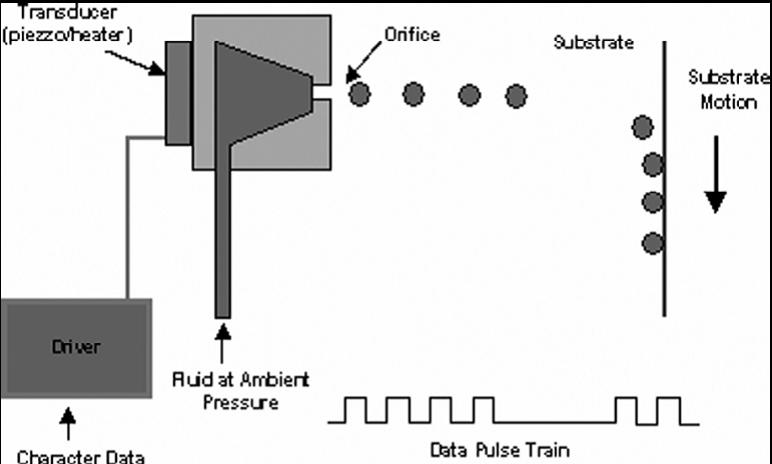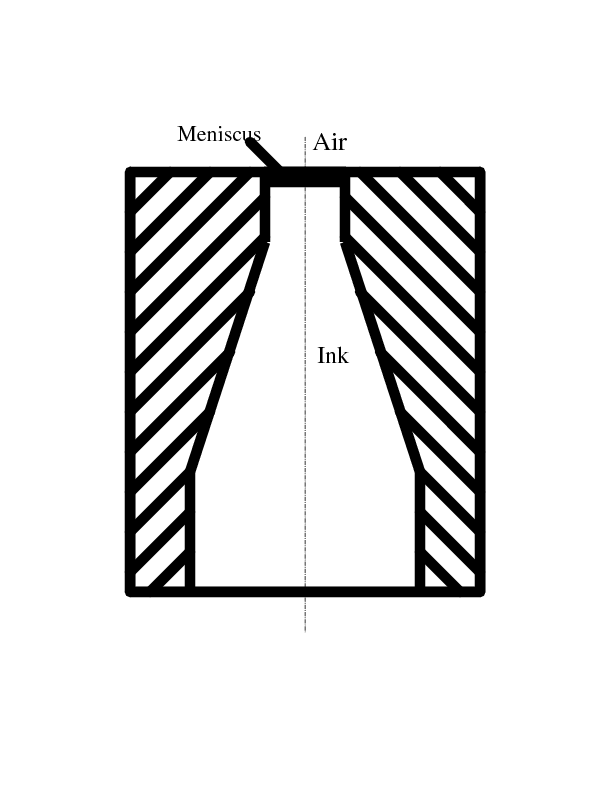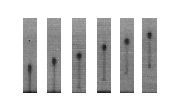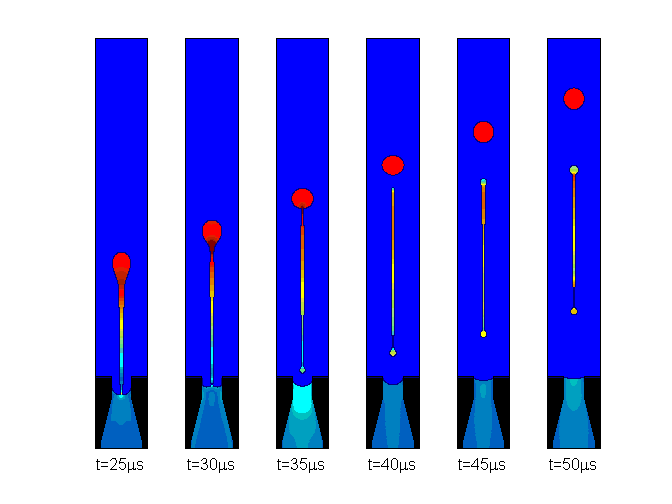OVERVIEW
APPLICATIONS
INTERACTIVE APPLETS
HISTORY OF THE METHODS/FLOW CHART
PUBLICATIONS
EDUCATIONAL MATERIAL
ACKNOWLEDGEMENTS
ABOUT THE AUTHOR/CV
Copyright:
1996-2010
J.A. Sethian
Ink Jet Plotters
In order to accurately simulate this process, the underlying algorithms should be able to faithfully discretize non-rectangular geometries, accurately capture two-phase flows through an axisymmetric nozzle, handle complicated topological change of ink droplets, conserve mass to a good approximation, and couple to external models which simulate the ink cartridge, supply channel, pressure chamber, and piezoelectric actuator.
Why?
The answer is that inkjet plotters are used in a wide spectrum of applications beyond the printing of documents. Vast arrays of inkjet plotters working together are used in the manufacture of LCD/plasma displays, fine-scale printing of circuit boards, and pharmaceutical testing.
In one type of printing process, called "drop-on-demand", ink drops are expelled one by one against a background.
|

|
|

|
Below, show an experimental photograph on the left and the numerical simulation at the same time on the right. You can see the first bubble being ejected from the chamber, followed by the pinch-off and separation into a main part and a residual satellite bubble.

|

|

Details The calculation was made using a coupled level set-projection method on quadrilateral grids is developed for piezoelectric ink jet simulations. The model is based on the Navier-Stokes equations for incompressible two-phase flows in the presence of surface tension and density jump across the interface separating ink and air, coupled to an electric circuit model which describes the driving mechanism behind the process, and a macroscopic contact model which describes the air-ink-wall dynamics. We simulate the axisymmetric flow on quadrilateral grids using a combination of second-order finite difference projection methods to solve the fluid equations and level set methods to track the air/ink interface. To improve the mass conservation performance of the coupled level set method, a bicubic interpolation is combined with the fast marching method for level set re-initialization on quadrilateral grids. to track the motion of the fluid interface.
References
-
A Coupled Level Set Projection Method Applied to Ink Jet
Simulation,
,
Yu, J-D., Sakai, S., and Sethian, J.A., Interfaces and Free Boundaries, 193, No. 1, pp 275-305, 2003,This paper List of downloadable publications -
A Coupled Quadrilateral Grid Level Set Projection Method Applied to
Ink Jet Simulation,
,
Yu, J.D., Sakai, S., and Sethian, J.A., J. Computational Physics, 206, 1, pp. 227-251, 2005.This paper List of downloadable publications